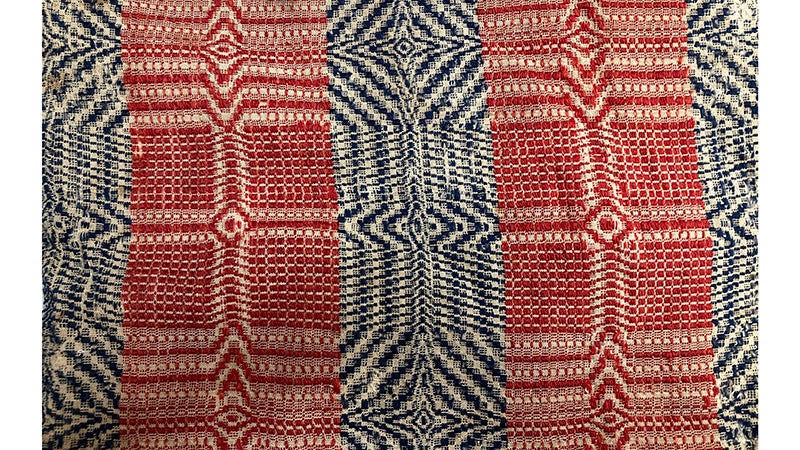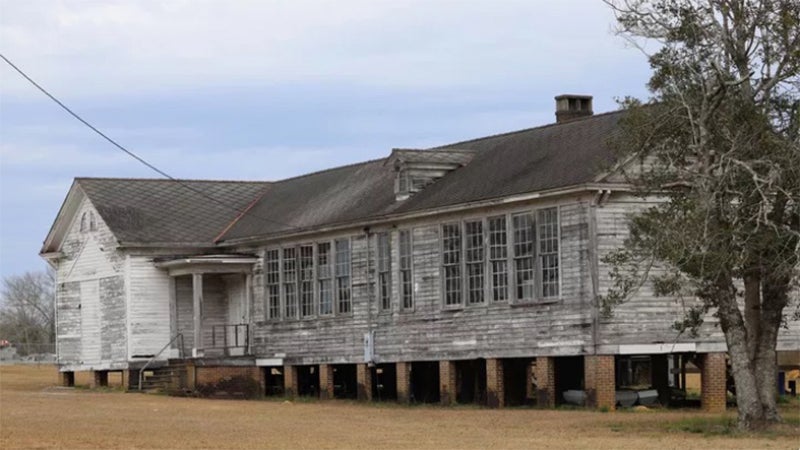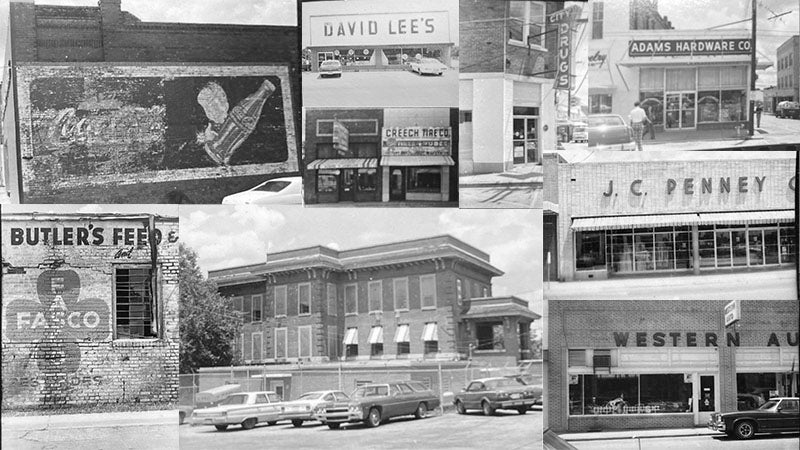Remember When: Camellia became state flower in 1959
Published 2:42 am Saturday, January 5, 2019

- When Elizabeth Clark and Andrew Loflin wed at Springdale on February 11, 2012, camellias were used on the banister, in the wedding cake, and on the lapels of groomsmen.
“ … Whatsoever things are lovely, if there be any virtue,
think on these things.” This Bible verse from Philippians 4:8
comes to mind as I ponder the new year. One of the loveliest
sights to behold around these parts is the array of blooming
Camellias. 2019 being the 60th anniversary of the Camellia’s
adoption as the official State Flower of Alabama, it seems
appropriate to write about the flower on this first week of the celebration of the Alabama Bicentennial year (1819-2019).
In the December 2018 – January 2019 issue of The Camellia
Journal of the American Camellia Society, a story is featured
about an Alabama icon, Bellingrath Gardens in Mobile, the site
of the upcoming 2019 annual meeting of the society where “one
of the best Camellia collections anywhere is found.”
In 1959, the Alabama Legislature designated the Camellia
the State Flower replacing the Goldenrod adopted in 1927.
This was accomplished at the urging of the Butler County ladies
in Greenville who called the Goldenrod a weed annoying to
those who are allergy-prone as well as being unsuitable to use as decoration for tea tables. Because there are numerous types of Camellias, in 1999, the Legislature designated the Camellia Japonica specifically as the official State Flower. Greenville is known today as “The Camellia City.”
Not native to Alabama but from Asia, Camellias thrive in a cool winter season. They typically bloom from November through
March with the peeks of blooms in January and February.
In 1959, the governor of Alabama promoted the planting of
the new State Flower all over the state. Long before that in April 1950 Andalusia residents had already become interested in beautifying the town with these Camellias. At that time when the town was attempting to recover from the dark days of World War II, a Men’s Camellia Club was formed electing Mr. J. H. Johnson as their first president. This was a trend in a number of towns, the establishment of Men’s Camellia Clubs.
These gentlemen were serious about adorning their yards with the
bushes that bloomed with red, white, pink, purple, variegated colors, and sometimes even yellow flowers. They studied the methods of planting, grafting, identifying varieties, naming, and tagging their Camellia bushes. Some of the local men that citizens today can remember as Camellia enthusiasts were Eddie Barrow, Dr. Edgar Pugh King, J. H. Johnson, Perkins Taylor, Buck Taylor, Leon Benson, Bellaire Krudop, L. R. (“Boots”) Deal, James Hugh Kyzar, Jr., Dr. Andy Johnson, Ashford Broughton, and Dr. Ray. These names surfaced in interviews I conducted with Helen King, Genia Johnson Dorman, Abbie and John Taylor, and Dr. Jim Krudop. “I’m sure there were others who participated in the club,” they all stated. “Camellia shows were held probably in the new Scherf Memorial Building that opened in the spring of 1951. Surely someone is still living that remembers the location of the Camellia shows.”
It was a pleasure to visit this week in the home of Mrs. Helen
(W. G.) King. Even at age 96 years old, she is so knowledgeable
and well-versed on Camellias and the particulars of those growing in her own yard, many of which were brought to Valley View Drive in 1959 when the family moved from McRainey Loop. She remembers well transplanting young Camellias to the new location. Even on one family vacation, the Kings traveled through Fort Valley, Georgia, the headquarters of the American Camellia Society, to obtain tags to label their bushes.
A cute story she told me about her little daughter Kathy riding her tricycle up and down the sidewalk on McRainey Loop. It seems that Kathy was gone longer than usual that day. Going outside to check on her, Helen came to find out that little Kathy had been busy picking the buds off the neighbor’s Camellia bush! In the back of my mind, I can almost remember doing the same thing! Seems like the boys usually did that routinely for ammunition for their sling shots!
Through the years, Helen King has carefully grown and
pampered their collections that she maintains in an on-going
inventory for her family. She reads the Mobile Press Register
and clips any articles that mention Bellingrath Gardens. The
names of just a few of her “treasures” are Rose Dawn, Purple
Dawn, Empress, Alba Plena, September Morn, Tomorrow,
Funny Face Betty, Herme’, Ville De Nantes. Mathionana
Supreme, Betty Sheffield Supreme, and White Empress. It is certainly amazing to me that she knows exactly which bloom is which by name! Her dear neighbor Pat Strength who walks the newspaper to her house every morning recently surprised her and cut 15 blossoms to Helen’s delight delivering a basket full to her door!
King remembers when all the new homes were being built in
the County Club area in the 1950s and 1960s and when young
couples began first moving into the area, Country Club Park and
Country Club Hills. A new neighborhood garden club was
started, the Pine Hills Garden Club. She had previously been a
member of the La Flora Garden Club, but Pine Hills interested
her to join this new group of ladies who were learning the art of
landscaping the yards of their new residences. She recalls Ada
Barnes, artistic daughter of George and Jane Barnes, rendering artwork for the cover of their club yearbook.
“In recent years,” King stated, “Ballard Krudop, a nearby neighbor, asked to graft some limbs and twigs for his yard. He, like his father and mother, Bellaire and Sara Frances, shared an appreciation for Camellias and was familiar in the methods and importance for preserving the varieties.” Another neighbor’s brother, brought rooted Camellias to the Bill Jones family all the way from North Carolina. Thyrza Allen Jones’ yard, the house and yard now occupied by the Judge Lex Short family, is full of Camellias. King further remembered the late Hazel Shreve, Sanford Road expert gardener extraordinaire, saying, “Hold the Camellias by the leaves, not by the blooms!”
Genia Dorman Johnson recalls her father’s interest for
Camellias. Veterinarian Dr. Andy Johnson may have gotten his
love for the flowers from Genia’s mother’s family from
Hartford. “Papa Black,” she states “wore a Pink Perfection on
his lapel to church every Sunday.” The Johnsons’ yard on
Montgomery Street is still full of the Camellia bushes today!
Dr. Jim Krudop’s mother and father moved to the Country
Club area on South Ridge Road in 1965. His parents brought
cuttings and plantings from McRainey Loop, too, like the Bill
Kings. Jim and Holly are Camellia enthusiasts today
themselves. They plan to attend the Annual Camellia Convention in Mobile in February, a Christmas gift to Holly.
John Taylor tells about a time when Buck Taylor’s garage
was being cleaned out prior to the sale of the property. John’s grandfather had resided on Three Notch Court and was part of the local Camellia shows which were held in Andalusia. A huge stack of clear cups was found for displaying the Camellias in the shows.
Dr. Bill Hansford has displayed pictures on social media of the annual Birmingham Camellia shows that are held each year. The colors are grouped together in those clear cups with water, and prizes are awarded for the best flowers in several classes. He vividly remembers when the Barrows on the corner of Stanley Street and Albritton Road and the Perkins Taylors on East Three Notch planted Camellias on lots adjacent to their homes. All of their varieties were identified and tagged. A neighbor of the Barrows, Alan Cotton, once brought one of the metal tags to the historical society meeting to show how this procedure was carried out.
One report in the quarterly magazine published by the ACS
states that there are over 20,000 varieties of Camellias. A
proper bush, they report, is full and rounded displaying flowers from the ground to the top. A “leggy” bush does not offer the most
blooms and does not protect the base which should be thick
with mulch .
It is not hard to “Iove” the Camellia blooms. I Remember
When the wedding of Elizabeth Clark and Andrew Loflin was
held at Springdale on February 11, 2012. Camellias in abundance were used to decorate everything from the stair railing, the bouquets, the wedding cake, the mantels, the serving tables, etc.There was magnificent beauty all around on that chilly winter day!
As one writer Gene Phillips in the Camellia journal states, “There are many lost loves waiting for you to find and care for in your community. Your discovery might just be in your own yard, your relatives’ yard, or your neighbors’ yard.” It just may be time for you to take notice, admire, and begin tending and preserving Camellias in Andalusia and Covington County for future generations to enjoy.
What color is your favorite bloom? Mine just happens to be the
Pink Perfection. I first spied one in Mrs. Nannie Belle Shaver
Waits’ yard next door to where I grew up. I happily purchased one of
these small bushes from the LBWCC Collegiate Civitan Club
several years ago and planted it in our front yard. It will be
years down the road before it grows to maturity, but my family
or some family who lives where we do will enjoy it one day –
every November through the end of February. I should tag it!
Sue Bass Wilson, AHS Class of 1965, is a local real estate broker and long-time member of the Covington Historical Society. She can be reached at suebwilson47@gmail.com.





